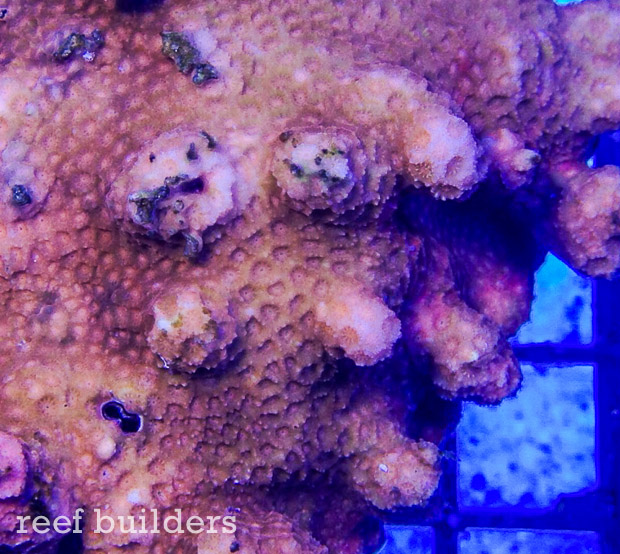As the coral enthusiasts that we are, we live for the rare, the unusual, and the corals that are otherwise challenging to identify. Case in point is this super neat Madracis coral that we spied at the World Wide Corals Farm opening event this past weekend in Orlando.
The evening that we arrived we spotted this coral and discussed it at length with Victor, Lou and Mike Paletta but we didn’t bother to poke it to cause the coral’s polyps to retract. It wasn’t until the next day that fellow coral-holic Julian Sprung spied this piece and immediately recognized it as a species of Madracis. The species could either be Madracis kirbyi or M. pharensis, Julian leans towards the former but we really have too little experience observing this species to tell.

If you haven’t heard of Madracis before don’t feel bad because this is one of the first colonies we’ve seen in aquariums and so this group of corals is really poorly known in coral aquariums. Madracis is much more common in the Caribbean where several shallow water species like M. mirabilis can be quite conspicuous and grow relatively fast with pencil-thin branches.
In the broader Indian and Pacific Oceans, Madracis is much rarer with the species present there being much more cryptic, deepwater, and many times non-photosynthetic. At first glance this colony of Madracis somewhat resembles a Cyphastrea species but its polyps have much longer tentacles and the closely spaced corallites means the colony appears fuzzy when the polyps are well extended.

Madracis doesn’t exactly have the extreme potential to be a show-stopping coral but it can show hints of green, orange and pink, that sometimes combine to create almost a rainbow colored, although subdued compared to say, a rainbow Montipora. Nevertheless, this particular colony of Madracis had been at World Wide Corals for four months and it is already beginning to show new growths of submassive nubby branches which have an interesting fluorescent orange-pink color.
Below you can see Victor fragging a piece of his rare Madracis colony for Julian which will be placed in low light and moderate flow and also be offered plenty of food in Julian’s aquarium. The appearance of this and several other colonies of Madracis colonies lately give us hope that we will be seeing more of this coral in the future and hopefully this will help us all learn more about this interesting group of corals.




